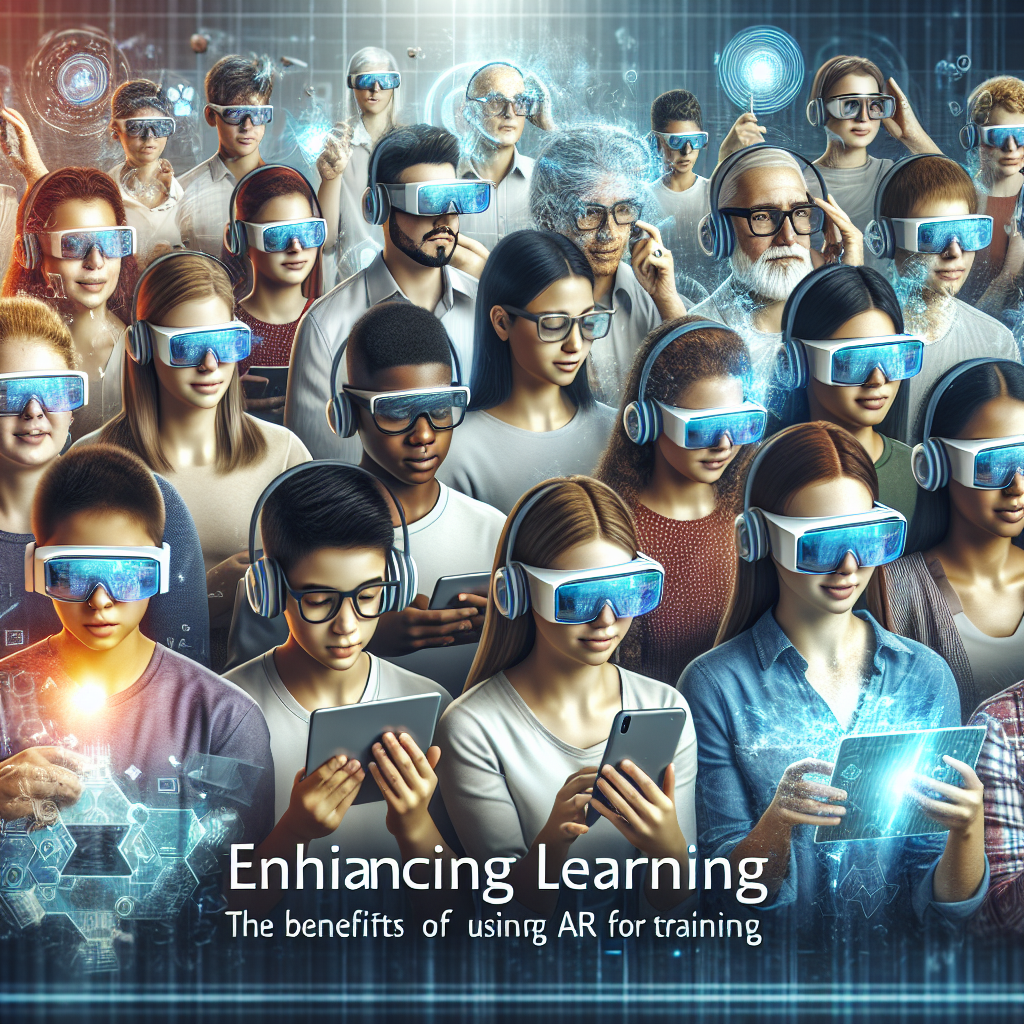Enhancing Learning: The Benefits of Using AR for Training
In today’s fast-paced world, technology is playing an increasingly important role in education and training. One of the most promising developments in this area is the use of Augmented Reality (AR) to enhance learning experiences. AR technology combines real-world environments with digital overlays, providing users with interactive and immersive learning experiences. In this article, we will explore the benefits of using AR for training and how it can revolutionize the way we learn.
Benefits of Using AR for Training
1. Immersive Learning Experience
AR technology creates a highly immersive learning environment by blending real-world elements with digital information. This allows users to interact with the training material in a much more engaging way, leading to better retention and understanding of the content. For example, in a medical training scenario, AR can provide trainees with a 3D model of the human body that they can interact with in real-time, allowing them to gain a deeper understanding of complex anatomical structures.
2. Enhanced Visualization
One of the key benefits of using AR for training is the ability to visualize complex concepts in a more intuitive way. By overlaying digital information on top of real-world objects, AR allows users to see how theoretical concepts apply to real-life scenarios. This can be particularly useful in technical training, where trainees can see how machinery works or how different components interact with each other in a simulated environment.
3. Personalized Learning
AR technology can be highly personalized to meet the individual learning needs of each trainee. By tracking user interactions and preferences, AR applications can tailor the training content to match the learner’s skill level and learning style. This can help trainees stay engaged and motivated throughout the training process, leading to better learning outcomes.
4. Real-time Feedback
AR technology provides instant feedback to trainees, allowing them to assess their performance and make corrections in real-time. This can be particularly useful in skills-based training, where trainees can practice their techniques and receive immediate feedback on their performance. By providing instant feedback, AR technology can help trainees improve their skills more quickly and effectively.
5. Cost-effective Training
Using AR technology for training can be a cost-effective alternative to traditional training methods. By creating virtual training environments, organizations can reduce the need for physical training facilities and equipment, saving time and resources. Additionally, AR technology can be easily updated and adapted to meet changing training needs, reducing the cost of developing new training materials.
Frequently Asked Questions (FAQs)
Q: How does AR technology work?
A: AR technology works by overlaying digital information on top of real-world environments using a smartphone, tablet, or AR headset. This allows users to interact with virtual objects and information as if they were part of the real world.
Q: What industries can benefit from using AR for training?
A: AR technology can be used in a wide range of industries for training purposes, including healthcare, manufacturing, automotive, aerospace, and defense. It can be particularly useful for technical training, where trainees need to understand complex concepts or processes.
Q: Is AR technology difficult to implement?
A: Implementing AR technology for training can be relatively straightforward, especially with the help of experienced developers and trainers. Many AR platforms provide user-friendly tools for creating and deploying AR training applications.
Q: What are some examples of successful AR training applications?
A: Some examples of successful AR training applications include medical simulation training, maintenance and repair training, safety training, and onboarding programs. These applications have been shown to improve learning outcomes and engagement among trainees.
Q: What are the challenges of using AR for training?
A: Some of the challenges of using AR for training include the initial cost of implementing the technology, the need for advanced technical skills to create AR content, and potential issues with user adoption. However, with proper planning and training, these challenges can be overcome to unlock the full potential of AR technology for training purposes.
In conclusion, Augmented Reality technology has the potential to revolutionize the way we learn and train. By providing immersive learning experiences, enhanced visualization, personalized learning, real-time feedback, and cost-effective training solutions, AR technology can help organizations improve training outcomes and engage learners in new and exciting ways. As the technology continues to evolve, we can expect to see even more innovative applications of AR for training in the future.
